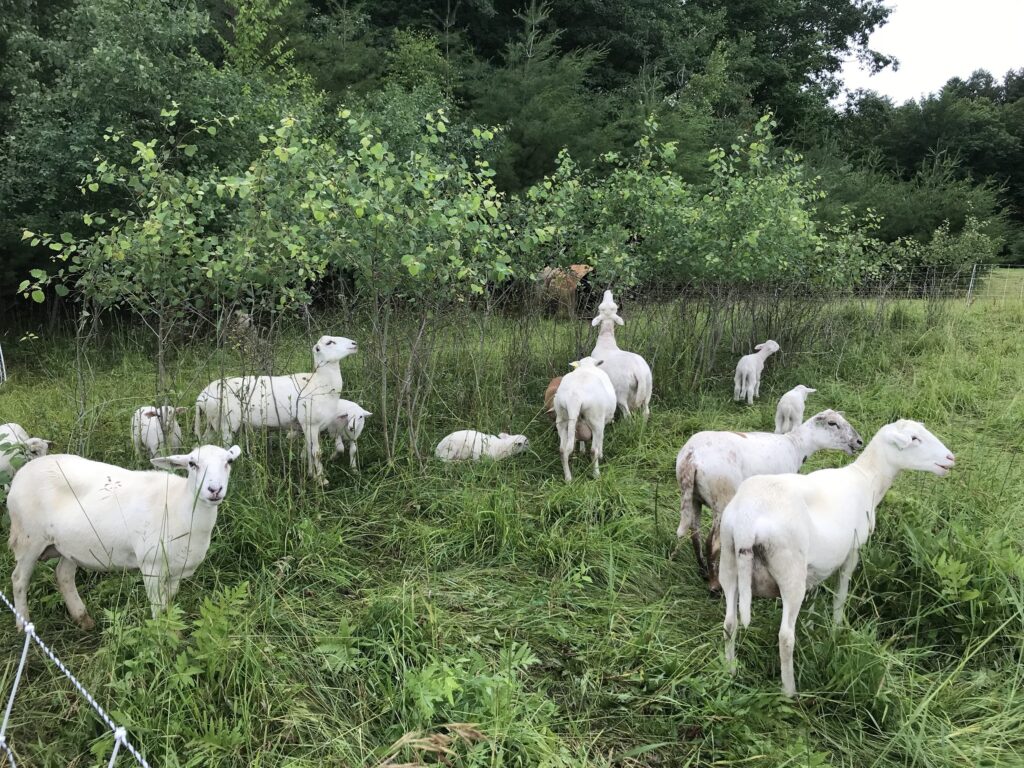By Tim Rowland |
A genre of 20th century agrarian artists loved nothing better than a pastoral scene with a stream tranquilly meandering through a neatly clipped meadow. But today, with the onset of a changing climate, farmers are understanding that the ideal was not ideal.
Streams need the shade of trees to protect cold-water fisheries. They need tough, shrubbery roots to hold sediment, floodplains to handle stormwater and buffers to filter animal manure that feeds algal blooms in warming waters.
Extreme storm events need to be mitigated, but so too do extreme heat and droughts. Animals need more shade, and soils need more water-holding structure. In all, climate change gives farmers a lot to think about, both in the form of challenges and opportunities.
“Climate resiliency is always a consideration as we work with agricultural producers through our Agricultural Environmental Management program to plan and implement best practices,” said Alice Halloran, district manager for the Essex County Soil and Water Conservation District. “Participating farms have completed a lot of water management projects in the past few years. They’ve installed a variety of practices to hold water on the landscape for irrigation, as well as to prevent erosion and manage excessive water from heavy rain events.”
So too has funding opened up for climate resilience. New York allocated $33 million through its Climate Resilient Farming Grant Program to help farms increase sustainability efforts and resilience to extreme weather events. The programming aims to reduce greenhouse gas emissions, protect water resources, and improve soil health. Through the Inflation Reduction Act, the federal government is spending $110 million on conservation and climate resiliency.
Farmers are taking a look at better management or pasture, forestry and animals to make their farms more harmonious with nature and able to better withstand climate change. “There has been an increased interest in silvopasture as farms try to improve livestock access to shelter, sequester carbon, better manage their landscapes, and diversify their operations,” Halloran said.

Putting these ideas into practice is Alex Caskey, owner of Barred Owl Brook Farm along Lake Champlain on the Essex-Westport border. The basic principles aren’t new, he said, but were in fact standard procedure before many modern people lost connection with their food supply.
Conservation, biology and a sustainable food system “are all tied together, whether you lean into them or not,” Caskey said. “Agroforestry and silvopasture are new names for ancient practices for animal welfare and growth and tree welfare and growth.”
With careful attention to genetics, Caskey’s flock of Katahdin hair sheep are bred to thrive on a summer diet that encourages the animals to forage on trees and shrubs. “Genetics are a huge missing link,” he said.
More trees and leafy shrubs dotting traditional pastureland also provide shade for the animals, soak up excess water, provide wildlife habitat and sequester carbon. (As Caskey adapts the farm to climate change, he does so with both animals and humans in mind.) Honey locust and mulberry have high-protein leaves, and sheep don’t mind a diet of species like buckthorn and willow. “For silvopasture, trash trees are exactly what you want,” Caskey said.
Along with sheep, Barred Owl Brook sells nursery stock and experiments with trees that, prior to a warming climate, would not have thrived this far north, such as pawpaws and northern pecans. This part of the Champlain Valley was once 4B, “now we’re solidly 5A,” Caskey said.
And perhaps an underappreciated aspect of climate change is its unpredictability. Rich Redman, a retired soil and water conservationist and author of the upcoming book series “Conservation Conversations,” said it’s not as easy as planting new, more heat-tolerant crops such as wheat, because there’s nothing to say that cool, moist summers and deepfreeze winters are entirely a thing of the past. “You can still get a real soaker that destroys the crop,” he said.
There are still ways farmers are adapting to make their farms and communities more resilient, Redman said, notably through more composting and manure management, increased reliance on cover crops, less tillage and tree planting along streams.
These practices help the farmer, and also the planet, said Cole Trager, Agriculture & Local Food Team Leader for the Cornell Cooperative Extension service in Essex County. “It’s really second grade science,” he said. “We’re capturing less carbon than ever — the whole earth is browning.”
Fields that are wintered over with only the stubble of mown grains and corn stalks are missing the value of carbon sequestering cover crops that stay green and can be grazed in the spring.
While cattle have gotten a bad rap for methane emissions, that misses the point that pastured animals (free of barren feedlots) are doing their part for the planet, as was the case when Texas was grassland and bison grazed the Plains. “Grazing animals are the engine that keeps things growing,” Trager said. “(Cows) are not bad, it’s just the management that’s bad.”
It is through good management that North Country farmers are reducing nutrient runoff, sequestering carbon, experimenting with new species and being mindful of creatures both domestic and wild. And in so doing, the line between farmer and conservationist and environmentalist becomes ever less distinct.
“So much of the way I farm has to do with climate change,” Caskey said.
